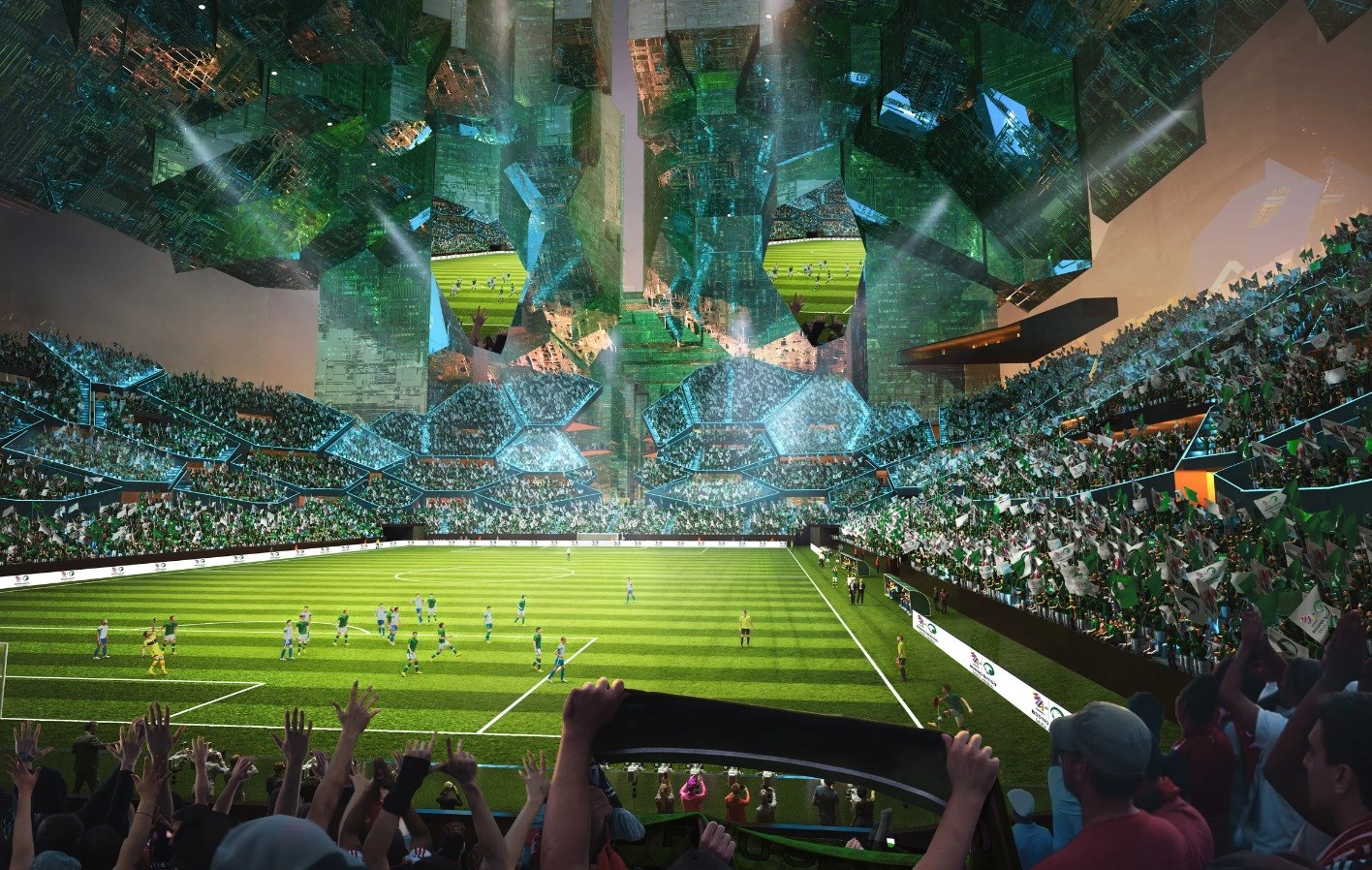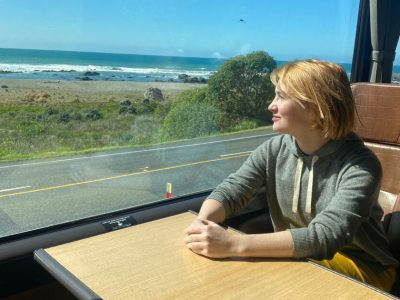Although the official vote to select the host country for the FIFA World Cup 2034 will only take place in December, with no other bidders, Saudi Arabia has been de facto chosen to welcome the tournament in a decade.
The official bid book, outlining the entire plan for how the country aims to prepare for the championship was presented to FIFA President Gianni Infantino and FIFA Secretary General Mattias Grafström on 29 July by Saudi Minister of Sports, Prince Abdulaziz bin Turki Al Faisal, Saudi Arabian Football Federation (SAFF) President, Yasser Al Misehal, the head of SAFF’s bidding unit, Hammad Albalawi.
Amid other details, such as ensuring accommodation and transport for participants and spectators as well as their safety, the book includes details on the 15 stadiums the tournament is set to take place in, 11 of which are yet to be built. Besides the capital of Riyadh, games will take place in Jeddah, Al Khobar, Abha and, perhaps the most interesting destination of all, Neom.

Neom is one of the mega-projects that the gulf country is building as part of the Saudi Vision 2030, an ambitious development program started by Prince Mohammed Bin Salman in an attempt to diversify the country’s economy from oil. Along with the mountain resort Trojena, one of the forefront projects within Neom is the Line, a 170-km-long belt of skyscrapers in the middle of the dessert, where the stadium for the World Cup should be built starting in 2027.
Despite recent doubts over the completion of the “city of the future” and of the Line in particular, Saudi Arabia has promised all the projects will go ahead as planned and the new arena will be “the most unique stadium in the world”. With a total capacity of over 46,000 spectators, the Neom stadium should be completed 2 years ahead of the tournament, in 2032.
“With a pitch situated more than 350 metres above ground, stunning vistas and a roof created from the city itself, the stadium will be an experience like no other. It will leverage the most advanced technology for players, spectators and broadcasters (e-ticket gates, 4K Ultra HD broadcasting, etc.)”, the bid book explains.

The arena will sit at the heart of a new sports focused neighbourhood, adjacent to the Health and Well-Being District and the University. It will be run like the rest of the city is supposed to – entirely on renewable energy generated primarily from wind and solar sources. Respecting the Line’s vision, transport systems to and from the stadium will be fully electric and the location should be reached within 5 minutes from anywhere in the skyscraper city.
Beyond the World Cup, the stadium is planned to be a signature landmark on the Line as the centrepiece of its sporting and active lifestyle program. It is meant to not only be the home of a men’s and women’s professional football club but to also provide a base for the club, fans and community programs, as well as being available to host other major events.
Together with Saudi Arabia, Morocco, Portugal, Spain, Argentina, Paraguay and Uruguay, which will co-host the 2030 World Cup, also submitted their bid book. After the official submission deadline on 31 July 2024, FIFA will assess the bid books and publish its evaluation report in Q4 2024. Should the relevant hosting requirements be met, the Extraordinary FIFA Congress will subsequently take a decision on the appointment of the hosts for the 2030 and 2034 editions of the FIFA World Cup later this year.










